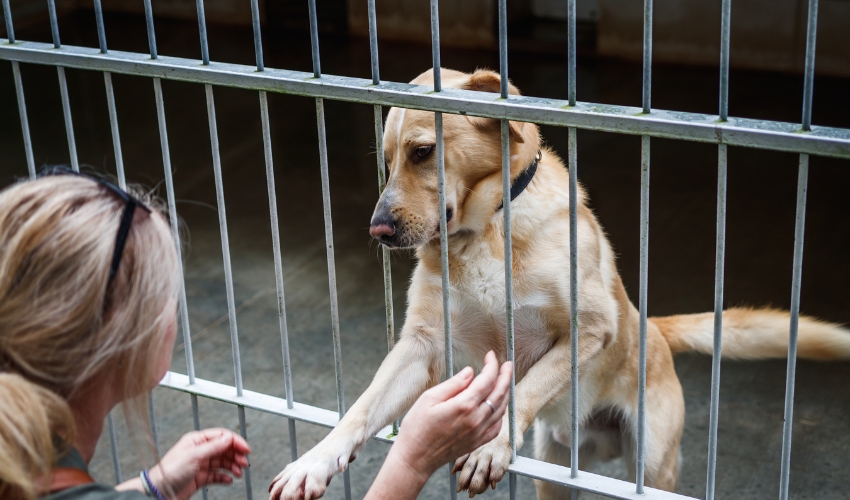Dogs brighten our lives with their unwavering love and affection, companionship, and faithfulness as beloved members of our families. But, there is a hidden peril amidst the coziness of our houses and the experiences we have with our animal companions: toxins that may seriously jeopardize their health and welfare. Dogs can become seriously ill or even die from a number of hazardous compounds that can be found in everyday household products, seemingly harmless plants, and meals. It is crucial to comprehend the risks associated with these poisons in order to practice responsible pet ownership and guarantee the security of our cherished canine friends.
Why is it important for every pet owner to know these different toxins that are deadly to dogs?
The majority of homes include caustic and hazardous chemicals that can be poisonous to dogs. Adult humans are aware enough to avoid contact with the most hazardous substances. But just as parents need to shield their kids from chemicals found in the home, dog owners also need to shield their pets from harm.
Pay close attention to the goods you use in your house and yard. Make an effort to transition to pet-safe items. Certain substances can be dangerous to dogs if they come into touch with their skin, are consumed, or are inhaled. Chemicals have the potential to enter the bloodstream and impact the major organs. Even though some chemicals are deemed safe for humans, they can nevertheless be harmful to dogs.
- Preventing unintentional ingestion: By being aware of common toxins, pet owners can see possible dangers in their surroundings and houses and take preventative action to keep their animals away from harmful substances. Through education about the risks associated with specific foods, plants, household objects, and chemicals, pet owners can take preventative measures to ensure the safety of their animals.
- Early detection of poisoning symptoms: By being aware of the telltale signs and symptoms of poisoning, pet owners can spot potential toxic substance ingestion in their animals and respond quickly. Early detection of the signs of poisoning can greatly enhance the prognosis and raise the likelihood of a favorable outcome.
- Early veterinary intervention: When pet owners are aware of potentially fatal toxins, they can take immediate action to get their pets treated if they exhibit symptoms of poisoning. Veterinary specialists can offer potentially fatal treatments including decontamination, supportive care, and antidotes to lessen the consequences of poisoning and shield the animal from more damage.
- Encouragement of responsible pet ownership: Having an awareness of the risks associated with poisonous materials emphasizes how important responsible pet ownership is. It is the responsibility of pet owners to give their animals a secure and healthy environment; this involves being aware of potential risks and implementing the necessary safety measures to keep their furry friends safe.
- Peace of mind: Being aware of the harmful toxins that might harm fur babies gives pet owners more self-assurance and readiness when it comes to providing for the health of their animals. Pet owners can have peace of mind knowing that they are doing everything within their power to keep their cherished companions safe and healthy by being proactive in reducing risks and being prepared to act in an emergency.
What are some deadly toxins you need to be aware of and keep away from your fur babies?
1. Chocolate: Dogs are poisoned by theobromine and caffeine found in chocolate. Because dark and baking chocolate have higher quantities of these chemicals, they are more harmful. Chocolate consumption can cause symptoms like diarrhea, vomiting, tremors, seizures, and in extreme circumstances, even death.
2. Grapes and raisins: The current understanding of these fruits’ toxicity is lacking. Many have speculated over the years as to whether the toxicity is caused by a chemical called salicylic, which is similar to aspirin and may be naturally present in grapes, or by a mycotoxin, which is a toxic compound generated by a fungus or mold and reduces blood flow to the kidneys. Tartaric acid has been proposed as a potential culprit in more recent times. But no particular hazardous agent has been discovered with precision up to this point. Any exposure to these fruits should raise the possibility of concern, as the current understanding of their hazardous nature is incomplete.
3. Xylitol: Xylitol is a sugar alternative that is frequently present in some peanut butter brands, candies, baked products, and gum without added sugar. When dogs consume xylitol, their bodies release insulin quickly, which can result in hypoglycemia, or low blood sugar, and potentially fatal side effects include liver failure and seizures.

4. Garlic and onions: Compounds found in garlic, onions, and other Allium family members can oxidatively damage canine red blood cells, resulting in hemolytic anemia. Symptoms of eating onions or garlic include pale gums, collapse, weakness, vomiting, and diarrhea.
5. Insecticides and rodenticides: When used to eradicate pests, these substances can be poisonous to dogs if consumed. These products frequently include hazardous substances like pyrethrins, anticoagulants, or organophosphates, which can induce symptoms ranging from upset stomach to hemorrhagic or neurological damage.
These are only a few instances of typical toxins that affect dogs; many more substances can be dangerous if consumed or come into contact with them. It is imperative that dog owners take preventative measures to avoid unintentional exposure to harmful substances and are aware of potential hazards in their surroundings. In order to reduce the possibility of severe consequences in the event of ingestion or exposure, immediate veterinarian care is required.












